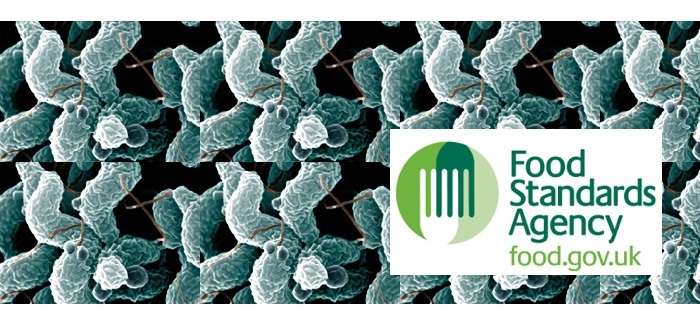The top nine retailers across the UK have now published their latest testing results on campylobacter contamination in UK-produced fresh whole chickens (covering samples tested from January to March 2018).
The latest figures show that on average, across the major retailers, 3.8% of chickens tested positive for the highest level of contamination; these are the chickens carrying more than 1,000 colony forming units per gram (cfu/g) of campylobacter. The corresponding figure for the previous set of results (October-December 2017) was 3.6%, while for the first publication (July-September 2017) it was 4.6%.
Michael Wight, Director of Policy and Science at the Food Standards Agency said: “The latest figures are consistent with previous results and show we are consolidating on the significant progress made so far. We will continue to actively work with retailers and smaller poultry businesses to further reduce campylobacter levels.
“We would like to thank the major retailers and poultry producers for their efforts in tackling campylobacter and for working alongside the FSA to coordinate the publication of results.”
Results
The method of results analysis has been adjusted to avoid it becoming distorted by variations in sample numbers submitted by retailers. The results still show a low and stable proportion of chickens with the highest level of contamination, which is consistent with previous results (see further detail below).
The average overall percentage levels of campylobacter in the retailers’ data can be found in the table below.
| Contamination levels | July-September 2017 | October-December 2017 | January-March 2018 |
|---|---|---|---|
| cfu/g less than 10 | 48.7% | 57.7% | 59.1% |
| cfu/g 10-99 | 28.3% | 22.0% | 23.9% |
| cfu/g 100-1000 | 18.4% | 16.7% | 13.2% |
| cfu/g over 1000 | 4.6% | 3.6% | 3.8% |
The method of results analysis has been adjusted from previous publications so that it more accurately reflects the variations between the sample numbers submitted by retailers. The figures from July-December 2017 have been revised to allow a meaningful comparison across the whole sampling period.
The latest results of campylobacter on chickens sampled, by retailer for January-March 2018:
- Aldi results
- Asda results
- Co-op results
- Lidl results
- Marks and Spencer results
- Morrisons results
- Sainsbury’s results
- Tesco results
- Waitrose results
The sampling and analyses are carried out in accordance with robust protocols laid down by the FSA.
The FSA been testing chickens for campylobacter since February 2014 and publishing the results as part of a campaign to bring together the whole food chain to tackle the problem. Campylobacter is the most common cause of food poisoning in the UK.
On 21 September 2017 the FSA announced changes to the survey, with major retailers carrying out their own sampling and publishing their results under robust protocols laid down by the FSA. The agency is continuing to sample fresh whole chickens sold at retail, however, the focus is now on the smaller retailers and the independent market.


